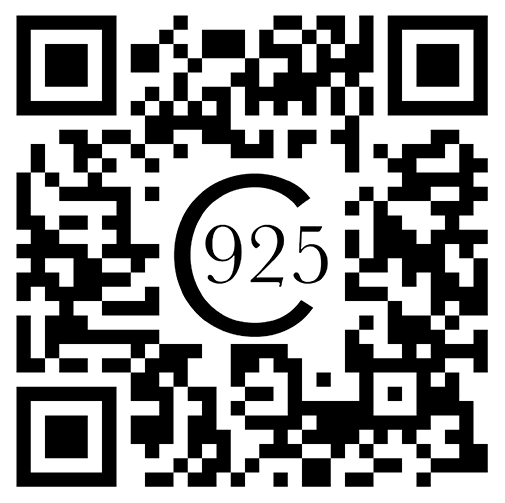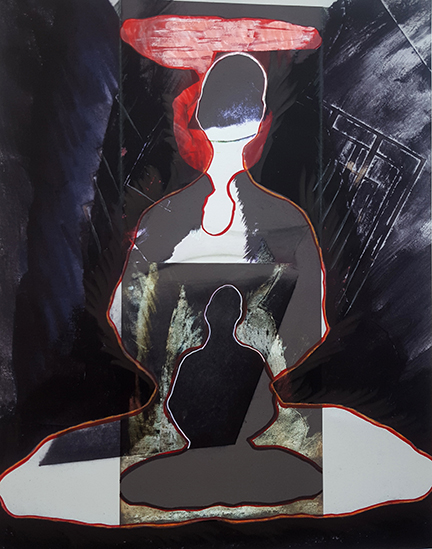2020 November 11 – 2021 December 31
Making the Invisible Visible
Virtual Exhibition
Kauffman creates mixed media pieces that depict people in meditative states; they dwell where the physical and the spiritual meet. As in much religious art, the creative process itself strengthens the artist’s private contemplative practice. View the exhibit online here.
Kauffman begins by making a drawing or painting, sometimes with collage elements added, which is later photographed or scanned, collaged, re-photographed and processed through the computer. The result is printed with archival inkjet pigments on 300 grams per square inch archival paper and becomes a substrate for the final drawing process, using ink, charcoal, conte crayon, pastel, watercolors, pencil, acrylic paint and/or collage elements to finish the piece.
In Sphere 2, the hourglass configuration of two meditating figures, one right-side up and one upside down showcases several aspects of meditation. In aerial yoga, practitioners literally meditate upside down. But this piece also depicts the duality of mind and body, the presence of spiritual energy above the meditating figure (a crux of the Tibetan tradition), the essence of time, and the power of the heart center. In this piece, the artist used the process described in paragraph two plus handmade stencils cut from her own drawings on heavy archival paper that creates subtle shadows.
Hourglass Meditation: Positive &Negative is a diptych of meditating figures, right-side up and upside down, that exist in opposing ambivalent fields. The upper panel emphasizes negative space while the lower panel shows positive figures. This piece combines a calm mental state with sharp energy forms entering from outside the sitters. Part of the initial drawing process was done on an electronic Wacom tablet with a stylus; the rest of the creative procedure was the same as described in the second paragraph.
In Meditation 4 Dark & Light, four meditating figures sit together in positive and negative fields. Partial nude figures depict awareness of the body. To create this work, original ink drawings were cut up and re-formed into new pieces. Handmade stencils were also used, created from Kauffman’s original drawings. Next, the artist followed the same process as already delineated.
In Meditation Oblique Overlay, three meditating figures are superimposed upon one another, depicting layers of the self, as the meditator progresses into ever-deeper levels. Dynamic outside energies intercept the sitters’ concentration.
Meditation Oblique Red is a close-up view of the meditating figure that shows conflicting forces that co-exist within a successful meditation session. The dark and light contrasts depict the basic duality of mind and body.
In Wacom 8 the swirling depiction of eight meditating figures show the dynamic energies within and around the individuals as they sit together. One figure is underdeveloped, and yet accepted as a complete part of the group. This piece was first drawn on an electronic Wacom tablet, transferred onto the computer, processed to create an archival inkjet print that was used as a substrate to draw further into the image and complete it with pastel, acrylic and ink.
The works in this series are mostly monochrome to focus on the purity of meditative energies.
Kaethe Kauffman’s one-person exhibit, La Foresta, is at Castello Gallery 780 in Venice, Italy, April 19 to June 23, 2024. Castello Gallery 780 is affiliated with the Venice Biennale art fair.

